Long before Europeans ventured to the new world, sailing dugout canoes fitted with outriggers sailed the waters in Southeast Asia and were used for migration throughout the Pacific region. The obvious seaworthiness of these boats was demonstrated by their ability to undertake remarkable voyages. Their twin-hulled form gave them stability, and the slender hulls gave them speed and seakeeping qualities that the western world could only dream of. Today, the recreational market offers many two- and three-hulled vessels for voyaging or daysailing. The Outrigger Junior is a modern adaptation of these early outriggers designed for beach sailing and fast spins around the bay.Once you step aboard this boat, you will realize that it is different. First off, it is not symmetrical. The sweeping curved akas support an outrigger hull on their port end and a cockpit seat to starboard. The outrigger side has a seat also, which is the only symmetrical arrangement in the boat. The boomed lateen rig has a stub mast, raked forward about 15 degrees. When the sail is hoisted, the yard is almost vertical and boom tilts up slightly with a large triangular sail between. The boom sweeps very low when eased out, but rises to clear the seated crew when centered. The outrigger-always-on-one-side configuration should cause a slight asymmetrical feel to the helm. But that does little to affect its sparkling performance, often sailing at close to wind speed. Outrigger Junior is asymmetrical, with an outrigger on the port side only. The hull form, lashings, and lateen sail are all reminiscent of features used by Pacific islanders.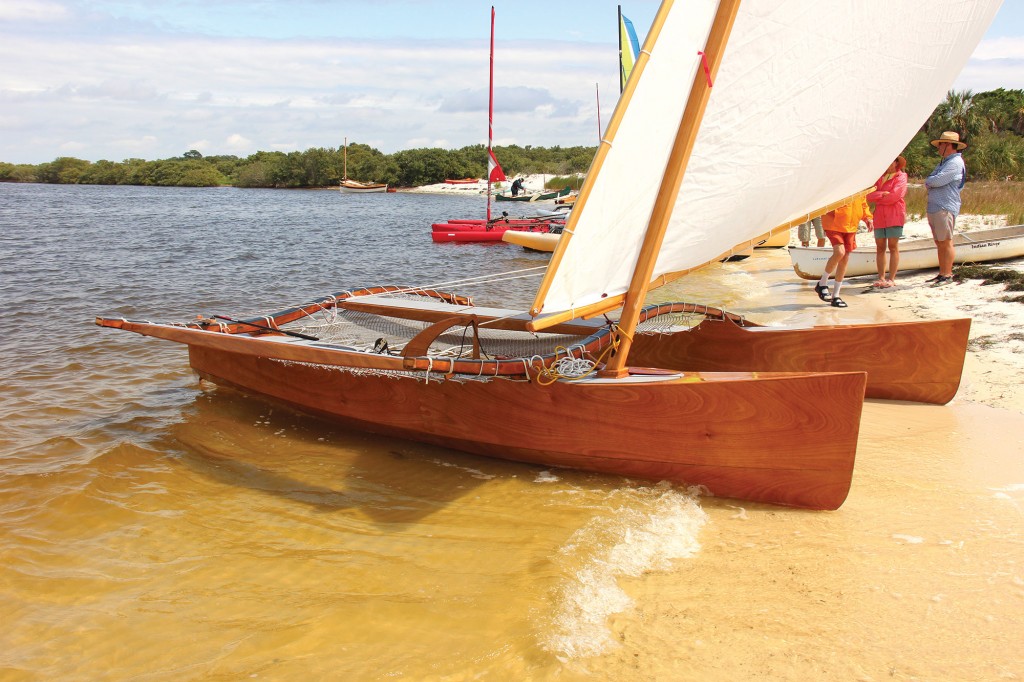
Join The Conversation
We welcome your comments about this article. To include a photo with your remarks, click Choose File below the Comment box.
Comments (4)
Comments are closed.

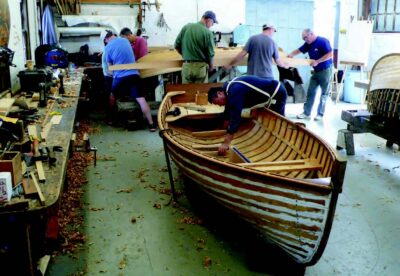
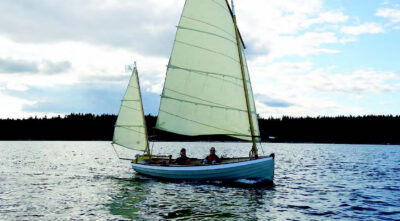
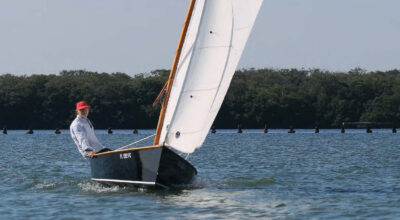
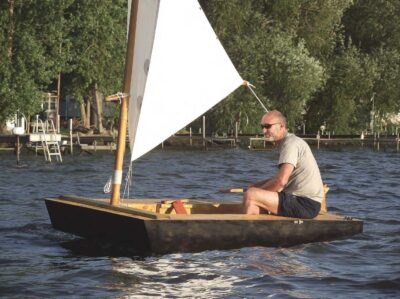
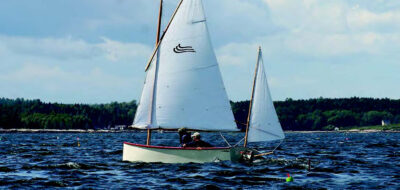
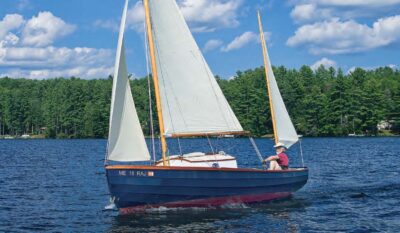
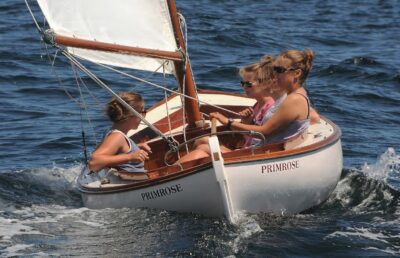
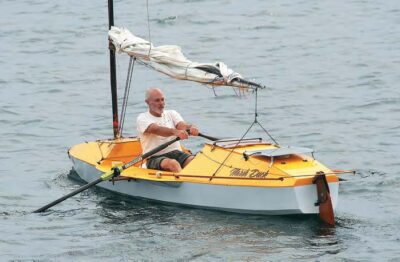
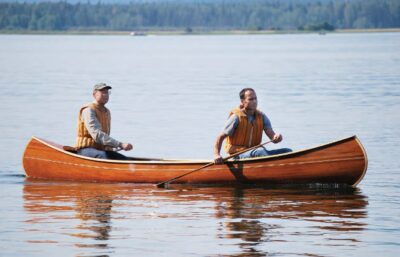
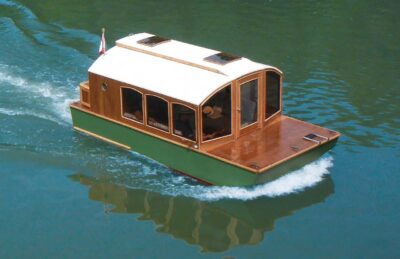
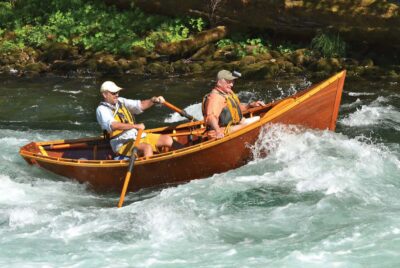

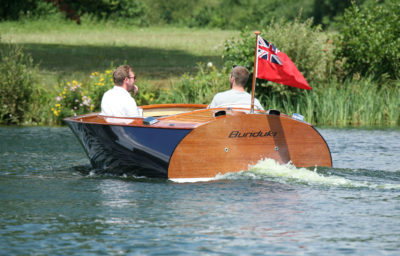
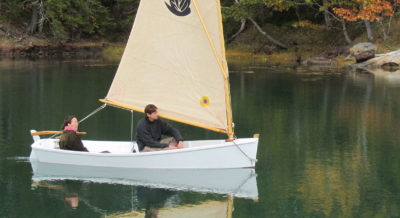
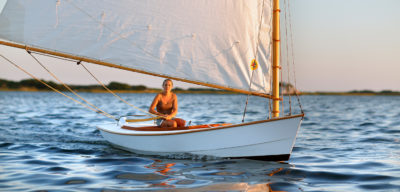


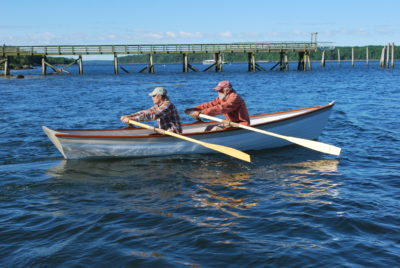
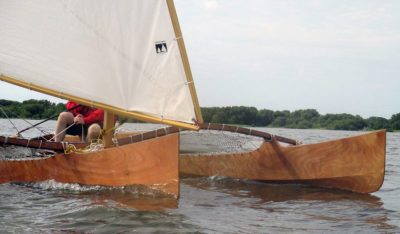
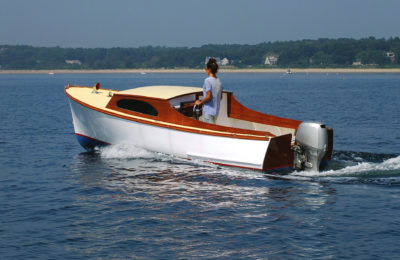
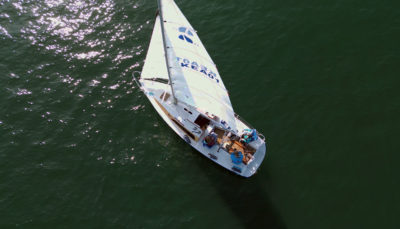
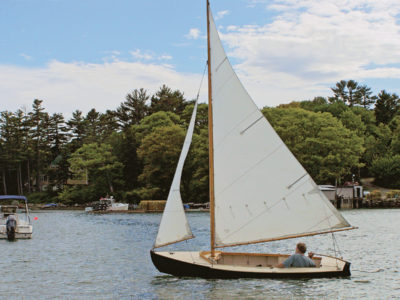
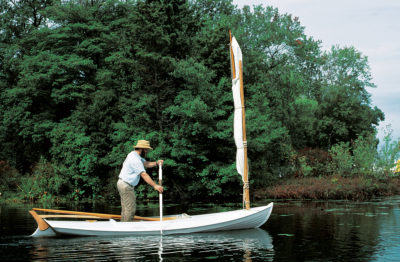
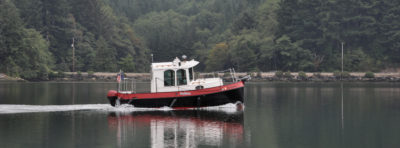
Chris White designed a nice little tacking proa like this back in the ’80s. I believe it was to be built with Constant Camber panels. I don’t know how many were built; I was personally more interested in his Discovery 20, a daysailing trimaran, but I’ve always thought that Chris’s little proa would be a lot of fun to sail. It looks like John Harris might have felt the same.
One thing I remember Chris saying is that “symmetry ain’t all it’s cracked up to be.” There was a fast tack and a seaworthy tack. You’d have more fun on one, and do the tuning/bosunry tasks on the other!
I’ve gotten rid of my beach cats years ago, largely due to storage issues with such a large trailer. So I’ve often thought a light car toppable breakdown beach cat would be pretty great. I’ve lately been sailing my CLC open cockpit double kayak (Mill Creek 16) as a tacking outrigger, with an ama/aka I designed. It’s a blast, though not overly fast. I follow John Harris and like the cut of his jib, especially when it comes to his now handful of proa/outrigger designs. His big 31′ proa kit Madness is currently a bit of an obsession of mine, but that’s a BIG project not quite on my billet yet.
All of this said, I should be completely in love with Outrigger Jr. Yet, hmm. One – it seems kind of heavy. I have to wonder if it’s a bit overbuilt. Most proas the outrigger hull would be a lot smaller relatively – which would also save weight. I would think it would be better to sit in or on the main hull on stbd tack, rather than over the side, tempting as you say a tipover. Two hulls, yet no storage in either. And all that lashing – got to be a better way.
But she’s a beauty. Very Polynesian looking, and kudos on the lateen rig and not being wedded to the standard main and jib. Very fitting on this boat.
Reminds me of the Malibu Outrigger popular in Southern CA in the 60’s. Fun to sail launching off Malibu Beach through the surf and riding back in just behind the crest of the wave.
John Harris was well aware of the Malibu Outrigger when designing this boat, and references it in some of his writing. He is a talented designer with many years of experience designing lightweight craft, and I suspect that the dimensions are what they need to be for the intended use. I look forward to sailing this one.